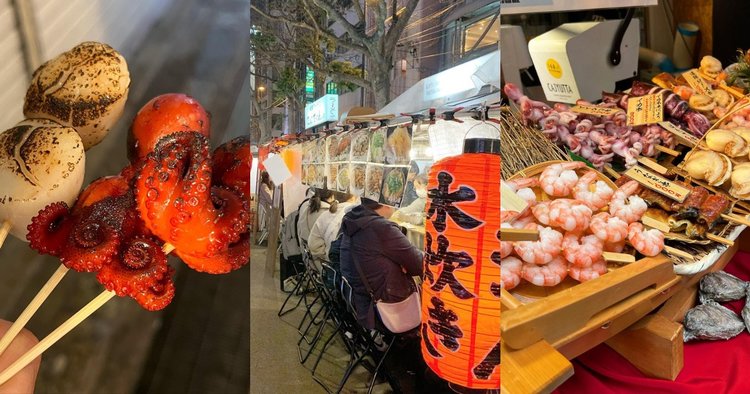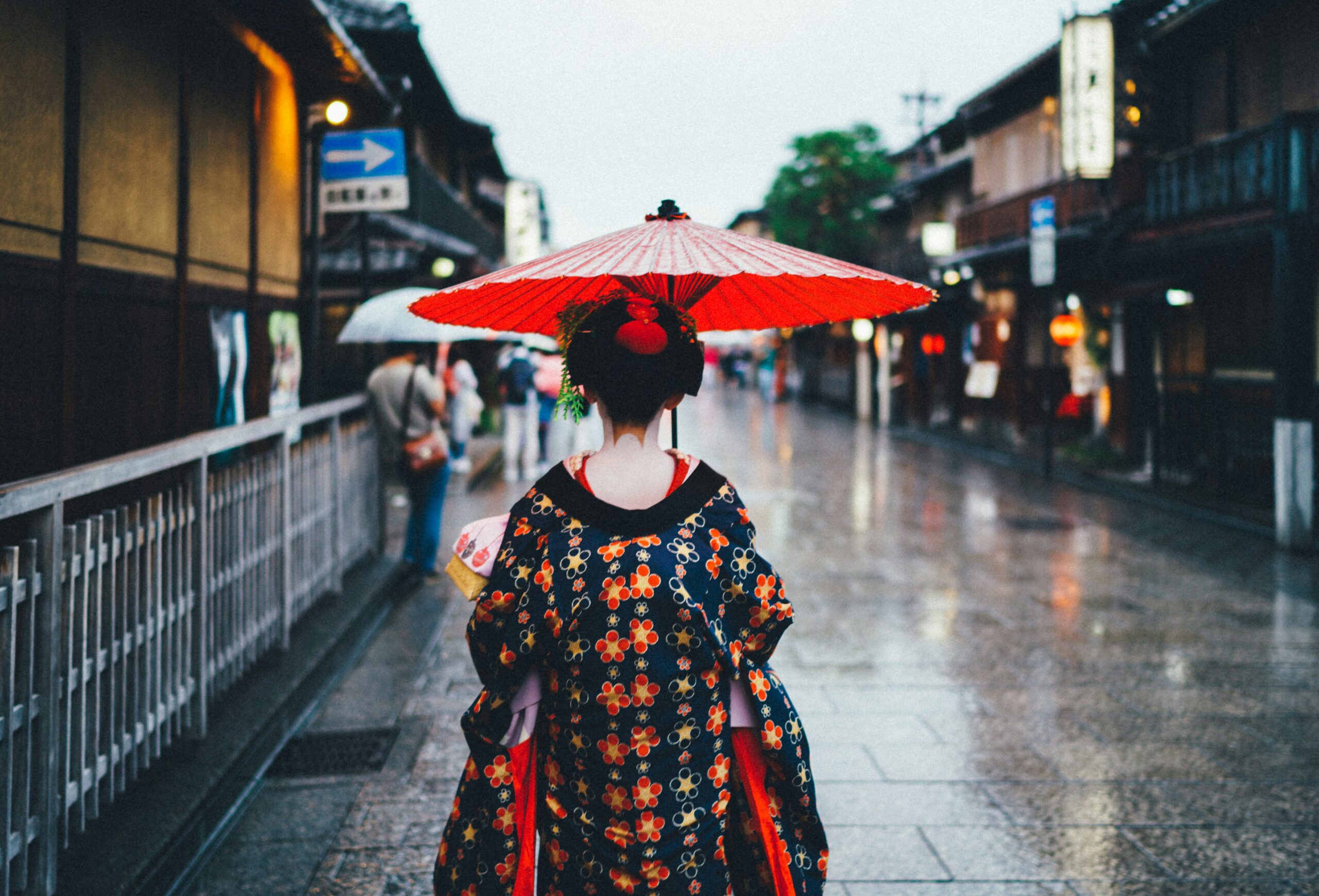Introduction
Cultural City Breaks in Japan for Foodies and History Buffs Japan, a nation where old practices mix consistently with current developments, offers a variety of social encounters that take care of both food fans and history enthusiasts. From notable sanctuaries and hallowed places to lively road food scenes and lovely feasting, Japan’s urban areas guarantee a remarkable excursion. Here are the absolute best social city breaks in Japan for foodies and history buffs.

Kyoto: The Core of Japan’s Practice
For the Set of experiences Buffs:
Kyoto, frequently alluded to as the social capital of Japan, is home to more than 2,000 sanctuaries and places of worship. The city’s verifiable importance is obvious, with UNESCO World Legacy locales like Kinkaku-ji (The Brilliant Structure) and Fushimi Inari-taisha, renowned for its great many vermillion torii entryways. Gion, the well-known geisha region, offers a brief look into conventional Japanese diversion, with teahouses and noteworthy wooden machiya houses covering the roads.
For the Foodies:
Kyoto’s culinary scene is similarly essentially as rich as its verifiable woven artwork. Kaiseki, a conventional multi-course feast, is a must-pursue for those looking to encounter the zenith of Japanese haute food. Nishiki Market, frequently alluded to as “Kyoto’s Kitchen,” is a food darling’s heaven, offering everything from new fish to nearby desserts and pickles. Try not to pass up yudofu (tofu hot pot) and matcha-based desserts, mirroring Kyoto’s profound association with tea culture.
Osaka: The Country’s Kitchen
For the Set of experiences Buffs:
While Osaka is prestigious for its innovation and clamoring economy, it additionally flaunts huge verifiable milestones. The close Sumiyoshi Taisha, quite possibly Japan’s most established Shinto sanctum, is a peaceful getaway that features customary engineering and strict practices.
For the Foodies:
Osaka’s moniker, “The Country’s Kitchen,” says a lot about its culinary ability. The city is well known for road food varieties, for example, takoyaki (octopus balls) and okonomiyaki (flavorful flapjacks). Dotonbori, Osaka’s energetic diversion locale, is a safe house for foodies, with its unending exhibit of diners and neon-lit environment. Enjoy kushikatsu (broiled sticks) and partake in a cup of nearby purpose.
Hiroshima: A City of Harmony and Strength
For the Set of experiences Buffs:
Hiroshima’s piercing history is a strong draw for guests. The Hiroshima Harmony Remembrance Park and Gallery offer a sobering yet fundamental experience, celebrating the survivors of the nuclear bombarding and pushing for worldwide harmony. Close by, the notorious Itsukushima Sanctuary on Miyajima Island, with its drifting torii door, gives a shocking setting to reflection and enthusiasm for Japan’s otherworldly legacy.

For the Foodies:
Hiroshima’s food scene is similarly convincing. Hiroshima-style okonomiyaki, layered with fixings like noodles, fish, and vegetables, is a nearby specialty that varies from its Osaka partner. The city’s new shellfish, collected from the Seto Inland Ocean, is a delicacy best delighted in barbecued or crude. Match these enjoyments with privately fermented purposes for a total culinary encounter.
Kanazawa: An Unexpected, yet invaluable treasure
For the Set of experiences Buffs:
Kanazawa, frequently eclipsed by its more popular partners, is a mother lode of verifiable and social encounters. The city’s very much safeguarded samurai and geisha areas, for example, Nagamachi and Higashi Chaya, transport guests back to the Edo time frame. Kenrokuen Nursery, one of Japan’s three most lovely scene gardens, is a work of art of plant plan.
For the Foodies:
Kanazawa’s closeness to the Ocean of Japan guarantees an abundance of new fish, conspicuously highlighted in its cooking. Omicho Market, known as “Kanazawa’s Kitchen,” offers a variety of fish, including the popular snow crab. The city is likewise known for its top-notch Kaga food, which grandstands occasional fixings and refined flavors. Try not to pass up gold leaf frozen yogurt, a rich treat novel to Kanazawa.
Fukuoka: A Mix of Custom and Innovation
For the Set of experiences Buffs:
Fukuoka, with its essential area on Kyushu Island, has been a social intersection for a long time. The city’s verifiable locales, for example, the antiquated Dazaifu Tenmangu Place of worship and the Fukuoka Palace ruins, offer looks into its rich past. The Kyushu Public Historical Center gives further bits of knowledge to its broad assortment of curios and presentations.
For the Foodies:
Fukuoka is a food darling’s fantasy, famous for its yatai (road food slows down) that line the roads around evening time. The city is well known for its tonkatsu ramen, described by a rich, smooth pork stock. Wash everything down with a glass of shochu, a conventional Japanese refined soul.
Tokyo: A City of Vast Potential Outcomes
For the Set of experiences Buffs:
Tokyo, Japan’s clamoring capital, might be known for its modern horizon, however, it likewise holds an abundance of verifiable locales. The quiet Meiji Holy place, committed to Sovereign Meiji and Ruler Shoken, offers a tranquil retreat amid the never-ending suburbia. The noteworthy Asakusa area is home to Senso-ji, Tokyo’s most seasoned sanctuary, where guests can encounter conventional Japanese culture and otherworldliness. Investigating the Edo-Tokyo Gallery gives further experiences into the city’s change from a little fishing town to a cutting-edge city.

For the Foodies:
Tokyo is a heaven for food fans, gloating the most Michelin-featured eateries of any city on the planet. Tsukiji External Market is a must-visit for new sushi and fish, while the restricted back streets of Brilliant Gai in Shinjuku offer an exceptional wasted insight. From top-of-the-line kaiseki eating to humble ramen shops, Tokyo’s culinary scene is unbelievably assorted. Remember to attempt tempura, sushi, and wagashi (Japanese desserts) for a credible taste of the city.
Nara: The Old Capital
For the Set of experiences Buffs:
Nara, Japan’s most memorable super durable capital, is a gold mine of verifiable and social milestones. The city’s Todai-ji Sanctuary houses the Incomparable Buddha, perhaps one of the biggest bronze sculptures on the planet, and is encircled by deer that wander openly in Nara Park. The Kasuga Taisha Place of worship, with its many lamps, offers an enchanted environment. Strolling through the old ways of Nara transports guests back to the eighth 100 years, giving a profound feeling of Japan’s verifiable roots.
For the Foodies:
Nara’s cooking is a magnificent investigation of customary Japanese flavors. The district is known for its kakinoha-zushi (sushi enclosed by persimmon leaves) and narazuke (vegetables salted in purpose dregs). Naramachi, the city’s old dealer region, is dabbed with beguiling bistros and diners where one can appreciate nearby indulgences. Relishing Nara’s food gives a sample of the past, as many dishes have been gone down through ages.
Sapporo: A Northern Jewel
For the Set of experiences Buffs:
Sapporo, the capital of Hokkaido, offers a one-of-a-kind mix of innovation and history. The city’s Authentic Town of Hokkaido is an outside exhibition hall that reproduces life during the Meiji and Taisho periods. The notable Sapporo Clock Pinnacle and the Hokkaido Place of Worship give further experiences into the area’s turn of events and social legacy. Sapporo’s set of experiences is likewise entwined with its spearheading soul, reflected in its metropolitan preparation and design of tourist spots.
For the Foodies:
Sapporo is prestigious for its good and delightful food. The city is the origin of miso ramen, a rich and exquisite noodle soup ideal for the chilly Hokkaido winters. Sapporo’s fish, particularly its crab and ocean imp, is among the freshest in Japan. The Sapporo Lager Historical Center offers a sample of the city’s preparing history, where guests can test neighborhood mixes. The yearly Sapporo Snow Celebration additionally includes a variety of food slows down offering Hokkaido’s best dishes.

Yokohama: Port City with a Cosmopolitan Style
For the Set of experiences Buffs:
Yokohama, found only south of Tokyo, is a city with a rich oceanic history. The Yokohama Red Block Distribution Center and the Hikawa Maru, a saved sea liner, offer looks into the city’s port legacy. The Sankei-en Nursery, a customary Japanese nursery, houses noteworthy structures brought from across Japan. The city’s set of experiences as one of the primary ports opened to unfamiliar exchange is apparent in its different engineering and social impacts.
For the Foodies:
Yokohama is popular for its different culinary scene, mirroring its worldwide associations. The city’s Chinatown, the biggest in Japan, is an energetic region where guests can partake in different Chinese dishes. The Cup Noodles Gallery offers a tomfoolery and intelligent experience, featuring the historical backdrop of moment noodles. Yokohama’s nearby forte, shumai (steamed dumplings), and other worldwide cooking styles make it a food darling’s heaven.
Takayama: Safeguarding Edo-Period Appeal
For the Set of experiences Buffs:
Takayama settled in the Japanese Alps, is known for its delightfully protected Edo-time roads. The city’s Sanmachi Suji region highlights notable trader houses and purpose breweries, offering a brief look into life during the Edo time frame. The Hida People Town, an outdoor historical center, features customarily covered rooftop houses and rustic engineering. Takayama’s rich history is commended through its semiannual celebrations, which are among the most gorgeous in Japan.
For the Foodies:
Takayama’s culinary contributions are well-established in neighborhood customs. Hida hamburger, an excellent wagyu hamburger from the locale, is a must-pursue meat sweethearts. The city’s morning markets, like Miyagawa Market, are ideal for inspecting neighborhood produce and road food. Takayama’s particular dishes, such as hoba miso (meat and vegetables barbecued on magnolia leaves) and Kansai (mountain vegetable) food, give a novel and delightful feasting experience.
Nagasaki: A Mixture of Societies
For the Set of experiences Buffs:
The city’s Oura Church and Glover Nursery mirror its global legacy, while the Nagasaki Harmony Park and Nuclear Bomb Exhibition Hall celebrate the lamentable occasions of The Second Great War. Dejima, a previous Dutch general store, offers experiences into the city’s extraordinary history of unfamiliar impact and disconnection.

For the Foodies:
Castella, a wipe cake presented by Portuguese dealers, is a famous nearby sweet. The city’s Chinatown offers different Chinese-propelled dishes, while Shippoku Ryori, a combination of Japanese, Chinese, and Western cooking styles, features Nagasaki’s culinary inventiveness.
Matsue: The City of Water
For the Set of experiences Buffs:
Matsue Palace, one of only a handful of exceptional excess unique palaces in Japan, offers all-encompassing perspectives on the city and Lake Shinji. The Lafcadio Hearn Commemoration Exhibition hall and home give experiences into the existence of the well-known author who archived Japanese culture.
For the Foodies:
Matsue’s desserts, especially wagashi, are prestigious for their fragile flavors and imaginativeness, mirroring the city’s profound association with tea culture. Guests can likewise enjoy nearby fish, for example, ocean bream and squid, ready in various customary dishes.
Japan’s different urban communities offer an ideal mix of verifiable wealth and culinary greatness, making them ideal for the two foodies and history devotees. Set out on a social city break in Japan, where each objective recounts a story through its milestones and flavors, making recollections that will endure forever.
Conclusion
Japan’s urban communities offer a remarkable mix of verifiable profundity and culinary greatness, making them ideal objections for the two foodies and history buffs. Whether meandering through old sanctuaries, enjoying nearby treats, or investigating dynamic business sectors, every city gives a particular social encounter that enhances the spirit and pleasures the sense of taste. Leave on an excursion through Japan, where each chomp and each step recounts an account of its rich legacy and imaginative soul.

Read More: Adventure Travel Destinations for Thrill-Seekers in South America
FAQs
The best times to visit Japan are spring (Walk to May) and pre-winter (September to November) for the wonderful climate and delightful view.
Indeed, must-attempt food sources incorporate sushi, ramen, okonomiyaki, takoyaki, and kaiseki cooking.
Most Japanese urban communities offer a mix of verifiable destinations and interesting nearby cooking, giving a rich social encounter.
While realizing Japanese can improve your experience, many signs and menus are in English, and local people are frequently useful to vacationers.
Indeed, Japan’s proficient transportation framework, including the Shinkansen (slug train), makes it simple to go between urban communities.











